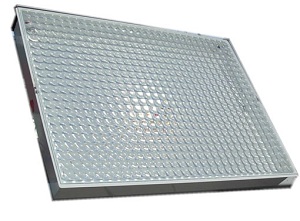Semprius breaks record with 33.9 percent efficient CPV module
 On Jan. 31, high-concentration photovoltaic (HCPV) maker Semprius, Inc. broke the record for a photovoltaic module, with an HCPV unit that was rated at 33.9 percent efficient at converting sunlight into electricity, besting the previous record which was 32 percent efficient.
On Jan. 31, high-concentration photovoltaic (HCPV) maker Semprius, Inc. broke the record for a photovoltaic module, with an HCPV unit that was rated at 33.9 percent efficient at converting sunlight into electricity, besting the previous record which was 32 percent efficient.
The North Carolina-based company is reaching these levels of efficiency as it prepares to start producing commercial modules later this year.
The modules, about a third of a square meter in size, were tested at the Instituto de Energía Solar at the Universidad Politécnica de Madrid (IES-UPM) under lab conditions.
“The Spanish lab is the premier location for CPV testing,” said Semprius Vice President of Business Development Russell Kanjorski. “They had the right equipment to do this.”
When the modules are introduced to the market in the second half of 2012—albeit in very limited quantity—they will likely be in the range of 33 percent to 34 percent efficient, according to Kanjorski.
“There was nothing special done to these modules,” he said. “They were just part of standard build.”
The company’s HCPV units are unique among other HCPV companies in that they use a proprietary deposition process called microprinting that creates individual triple-junction gallium arsenide cells that are roughly the size of a pen dot.
“Typical cells would be 1 centimeter by 1 centimeter. We’re talking 600 microns for one of our cells,” Kanjorski said.
Since each cell is so small, it also allows the company to minimize the optics that focus sunlight on the cells.
The module, which consists of many of the small cells, is only 2.5 inches deep, according to Kanjorski. They also are very good at shedding heat, so the units don’t require heat sinks.
Many other HCPV modules are thicker, sometimes up to 14 inches thick.
“This almost looks like a standard module,” he said. The thinner units are lighter and easier to ship. When installed, they have less resistance to the wind, all of which will help reduce the cost.
The company already is field-testing the devices in a number of locations, among them a 3.5-kilowatt unit in Tucson, where they recently upgraded the system to one the company plans to go to market with.
Right now the company is installing manufacturing components to automate the assembly of the modules, which now are being produced manually, according to Kanjorski.



